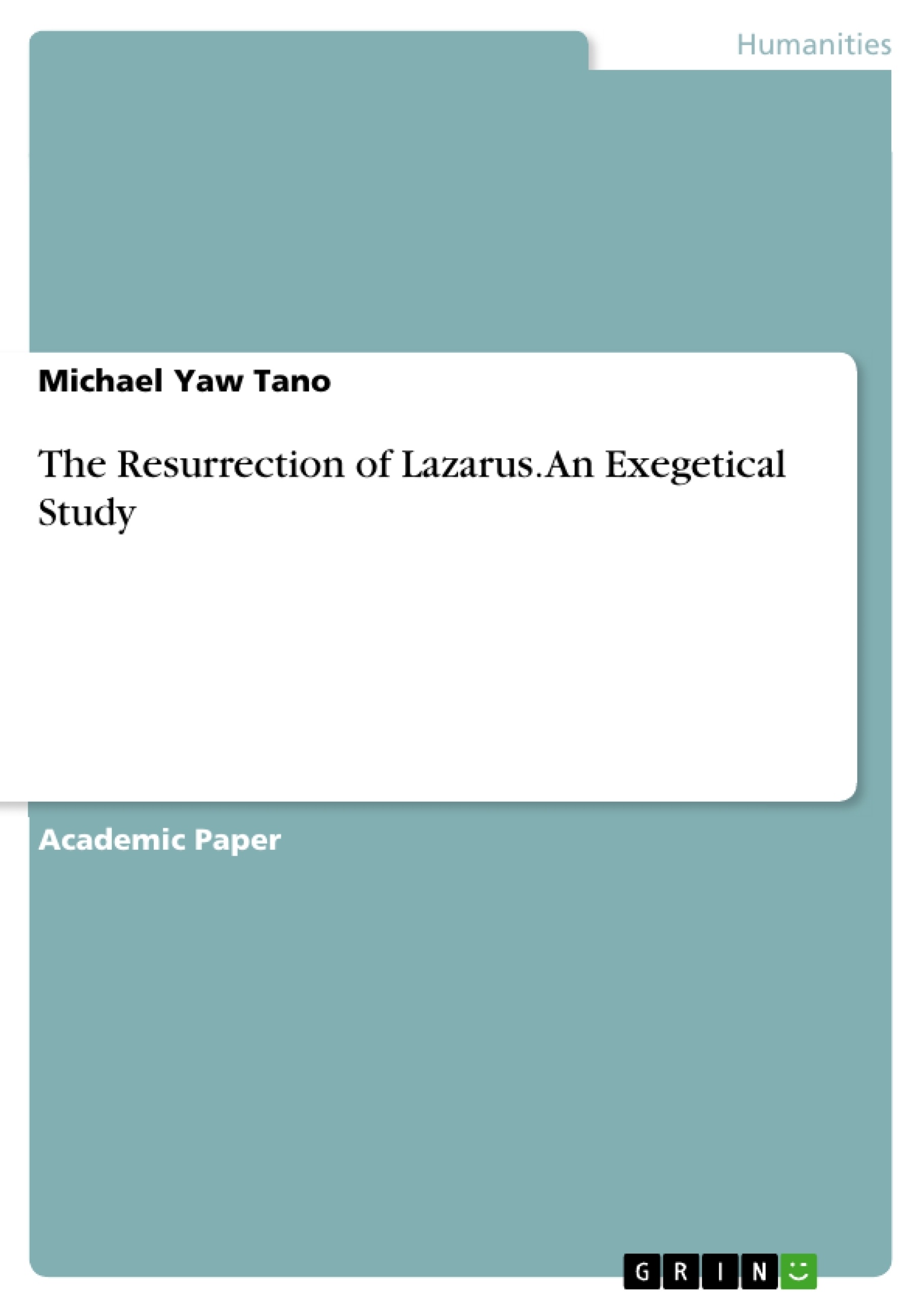The paper focuses on the seventh miracle of Jesus in John's Gospel. What it says to modern readers, and how they should respond to it, has been elaborated in this paper.
Many have interpreted the resurrection of Lazarus without considering its context. They disregarded both the historical and literary contexts of this miracle of Jesus. In this paper, the writer seeks to exegete and explain this sign by considering both the literary and historical contexts. John proves in his account that Jesus is the Son of God, and by believing, one would be saved. The paper focuses on the seventh miracle of Jesus in John's Gospel. What it says to modern readers, and how they should respond to it has been elaborated in this paper.
Inhaltsverzeichnis (Table of Contents)
- The Resurrection of Lazarus
- The Purpose of John's Gospel
- The Seven Signs
- The Raising of Lazarus
- The Initial and Larger Context
- The Significance of the Sign
- The Response to the Sign
Zielsetzung und Themenschwerpunkte (Objectives and Key Themes)
The paper aims to explore the seventh sign of Jesus, the raising of Lazarus, within the larger context of John's Gospel. It examines the significance of this miracle as a demonstration of Jesus' divine power and its impact on the characters and the reader.
- The divinity of Jesus
- The power of faith
- The nature of death and resurrection
- The tension between belief and disbelief
- The ultimate life Jesus offers through faith
Zusammenfassung der Kapitel (Chapter Summaries)
- The Resurrection of Lazarus
- The Purpose of John's Gospel: This section outlines the purpose of John's Gospel as a testament to Jesus' divinity and the importance of faith in him for salvation. It highlights the Gospel's focus on Jesus' last days before his crucifixion and resurrection.
- The Seven Signs: This part explores the seven signs in John's Gospel as evidence of Jesus' divinity. It emphasizes the significance of these signs in revealing Jesus' glory and power.
- The Raising of Lazarus: This chapter delves into the story of Lazarus' resurrection, highlighting its context and the various interpretations surrounding it. It analyzes how the miracle demonstrates Jesus' authority over death and foreshadows his own resurrection.
- The Initial and Larger Context: This section focuses on the context of Lazarus' illness and death, highlighting the significance of the setting and the relationship between Jesus and the sisters, Mary and Martha.
- The Significance of the Sign: This part explores the implications of Lazarus' resurrection as a demonstration of Jesus' divine power and his ability to conquer death. It emphasizes the ultimate life Jesus offers through faith.
- The Response to the Sign: This section examines the reactions of the characters, including the Jews and the disciples, to the miracle. It analyzes the tension between belief and disbelief and the consequences of rejecting Jesus.
Schlüsselwörter (Keywords)
The main keywords and focus topics of the text are: Jesus Christ, John's Gospel, divinity, signs, miracles, resurrection, Lazarus, faith, belief, disbelief, death, eternal life, salvation, authority, power, Jewish leaders, tension, response, consequences.
- Quote paper
- Michael Yaw Tano (Author), 2023, The Resurrection of Lazarus. An Exegetical Study, Munich, GRIN Verlag, https://www.grin.com/document/1344471



